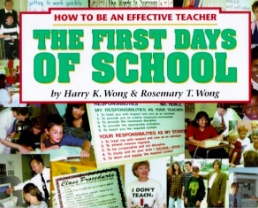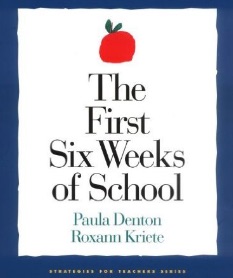
Allison Pajor, IMSE
As a first year teacher, the first hour of the first day is incredibly intimidating.
Knowing that your first encounter with each one of your students can make or break the next 10 months you will share with them is as exciting as it is scary. After four years of college courses, it was easy to explain the theory behind teaching and subject content. And with the additional benefit of a yearlong internship, I knew I had a support system in place if I needed further practical guidance.
But when it came time for my own class, I most definitely felt the responsibility for 31 fresh-faced 5th graders weighing heavily on me.
I taught in a high poverty district, where all students receive free breakfast, and a high percent received free or reduced lunches. Most students had a very difficult home life and a lack of parental support. In any school, a teacher spends more waking hours with their students than the parents do, but I also knew I would have to both nurture these students in ways they maybe weren’t getting at home, while still helping them to make academic gains. Going into my first year, the tangibles of my classroom were ready: the library was labeled and sorted, the bulletin boards were prepared for student work to be displayed, the desks were configured, the meeting area looked welcoming.
I felt fully equipped until it came time to lesson plan for the first few weeks and make the big decisions that would impact my routines and expectations for the rest of the year. During those final days of prepping for the first day, my goal was to set my students up for success for their 5th grade year, and at the same time, set myself up for success during my first teaching year.
Here are the three books I turned to that calmed my nerves and motivated me with the desire to lead the students in the best way possible.
The First Days of School By Harry K. and Rosemary T. Wong
Wong
This book is empowering and motivating for teachers of all levels. I actually referred to this book before each school year, not just my first, because it is a powerful reminder of the impact a teacher can have on a child’s life especially in the first days of the school year. The Wongs do a wonderful job explaining the importance of establishing routines for the classroom and how to effectively manage a classroom. As a first year teacher, classroom management can be difficult because you don’t have much or any of your own experience as a confidence booster.
A well-managed classroom makes all the difference. Students want to know what to expect and want boundaries. The Wongs also do a great job explaining how to build one-on-one relationships with each student.
Because of this book, I made sure that every single morning I greeted each student individually at the door or at their locker with a handshake, high five, or fist bump and said, “Good Morning, I am so glad you are here today.” Our classroom became a community and I definitely credit this book for guiding me through that process.
Here’s one of my favorite lists from the book:
The Effective Teacher
1. Fosters a high level of student involvement with work
2. Sets clear student expectations
3. Allows for relatively little wasted time, confusion, or disruption
4. Creates a work-oriented but relaxed and pleasant climate
Buy it here: http://tinyurl.com/j6h8rxm

The First Six Weeks of School By Paula Denton and Roxann Kriete
This is another great book on setting the tone of the classroom in the early weeks of school. Denton & Kriete expand on the importance of spending a majority of class time on building a community and establishing routines rather than rushing into content right away. The book is broken down by each week with sample schedules for each day and has different sections for different grade levels.
This book was a lifesaver and relaxed my nerves over what to introduce each day in terms of routines and expectations without overwhelming or boring students. This book was also helpful because it has hundreds of lessons and activities to get to know students as individuals. Denton & Kriete also cover fostering a strong community within the classroom and ways to teach effective routines.
Buy it here: http://tinyurl.com/jhns9ob
 Teach Like A Champion 2.0: 62 Techniques that Put Students on the Path to College (K12) By Doug Lemov
Teach Like A Champion 2.0: 62 Techniques that Put Students on the Path to College (K12) By Doug Lemov
This book is all about motivating students to improve their academic success. It is broken down into one technique per chapter, with specific ways to implement them in your classroom and why they work. With each technique, I was reminded of the fact that I needed to set high standards for my students in order to push them to reach their full potential.
One of my favorite techniques is “Wait Time.” When you ask a question, you can’t expect all students to have the answer immediately and typically there are students who will process faster than others. This does not mean their answers will be wrong, in fact the students who take a few seconds to answer oftentimes have a more detailed explanation for their answer.
The other benefit of waiting is you will typically have more students able to answer. This was especially beneficial in my class because I had wide variety of abilities. It helped students to know that my expectation was for them to wait quietly with their thumb up at their chest to give everyone ample wait time without the stress of hands waving in the air. Over time, the students who were typically the first ones ready to answer were pausing to create a more thoughtful response and my students who were typically too intimidated to answer were suddenly volunteering with huge smiles because they were so excited to be able to answer the question.
Buy it here: http://tinyurl.com/zvf6guf
